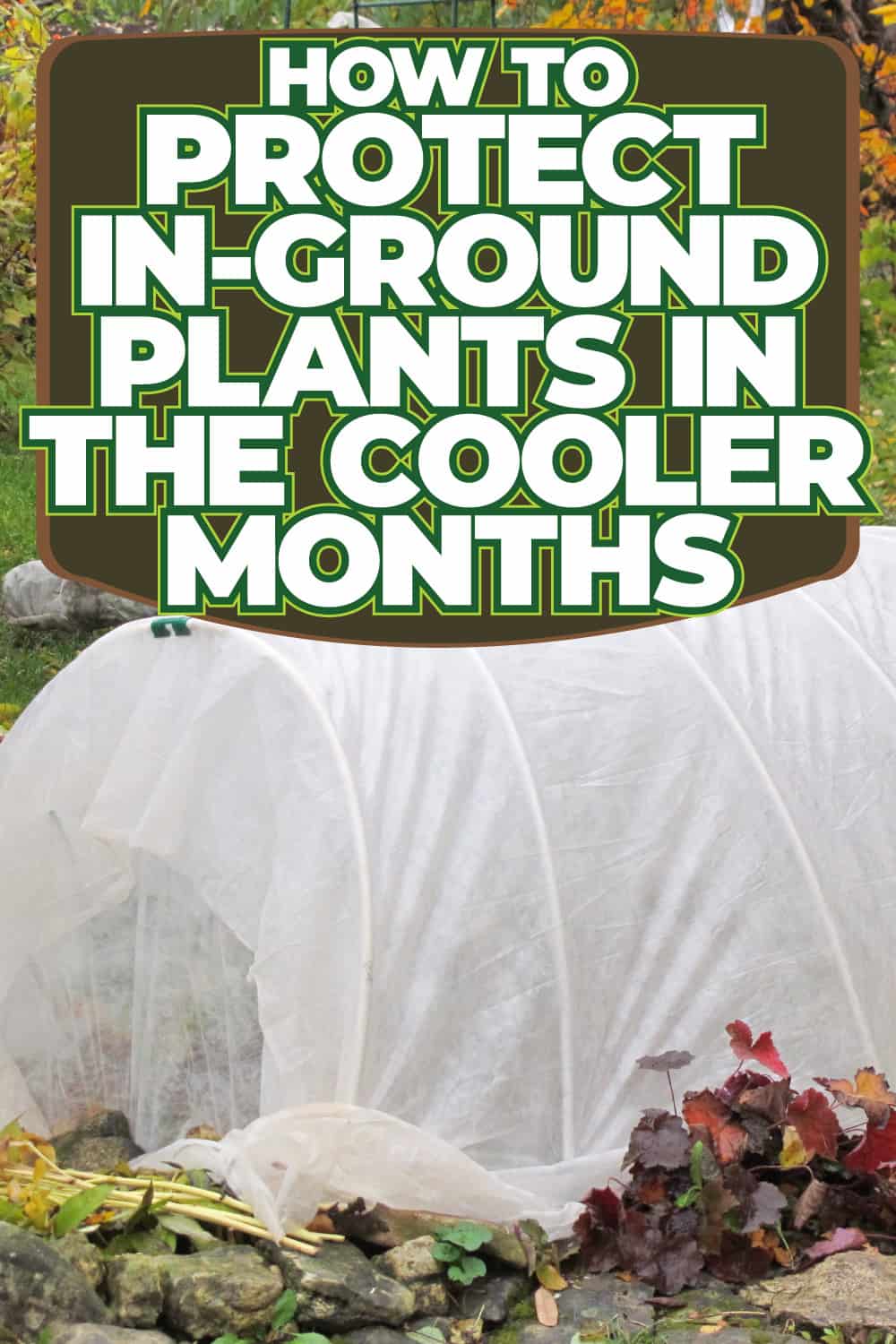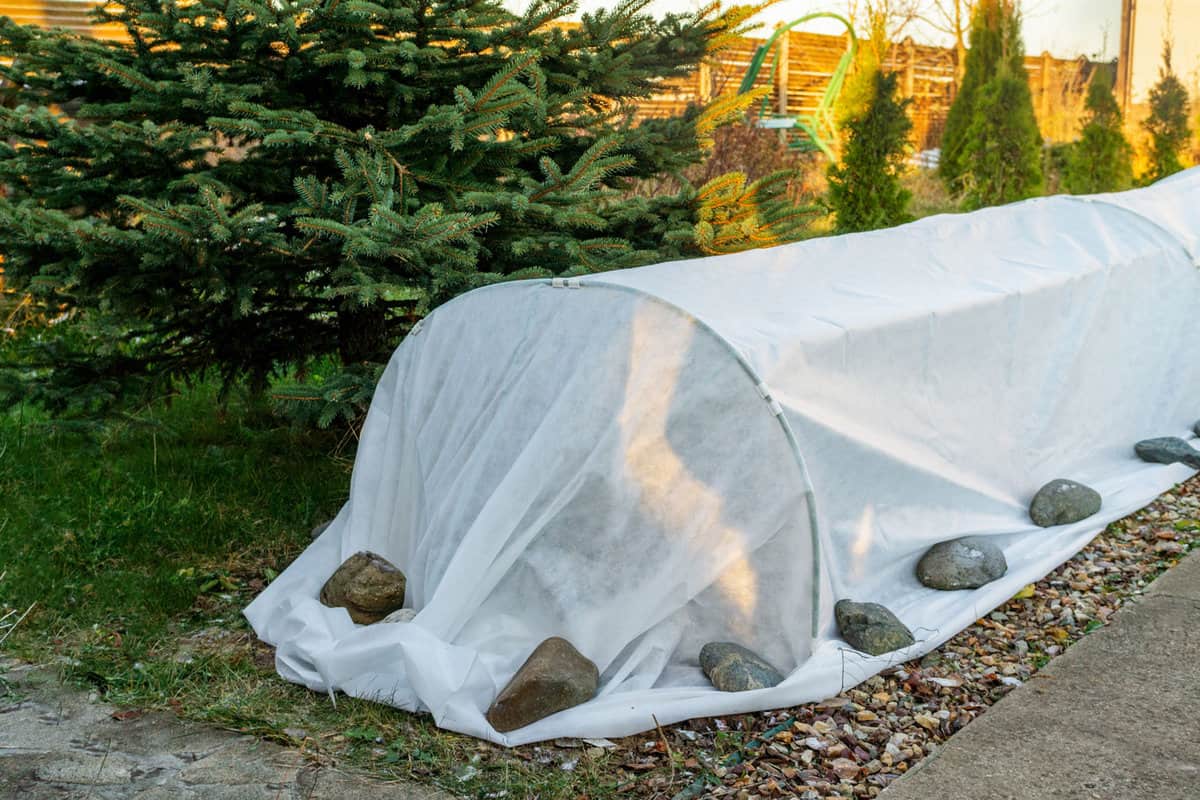As the cooler months approach, it's essential to prepare your in-ground plants to ensure they survive and thrive throughout the season.
Many in-ground plants are vulnerable to the chill of fall and winter.
Although some plants naturally go dormant during this time, taking measures to protect them can make a significant difference in their overall health and growth.
In this guide, we offer practical advice and steps to help you ensure your plants remain healthy throughout the colder seasons.

Understanding the Needs of Your Plants
As the cooler months approach, it's important to understand the specific requirements of your plants to protect them.

First, you should identify the plants in your garden to know their specific needs, such as water, light, and temperature requirements.
Some plants may be more resilient, while others might need extra attention during cold weather.
Know the Hardiness Zone
To protect your plants effectively, be aware of the hardiness zone in which you live.
This will help you select plants naturally suited to your region’s climate, making it easier to maintain their health during winter months.
Watering
Make sure you adjust the frequency and amount of water you provide to your plants during the colder months.
Cold weather tends to reduce water evaporation, meaning your plants may need less water than in warmer months.
Overwatering could lead to root rot, so be mindful of your plants' requirements.
Preparing the Soil for Cooler Months
As the cooler months approach, it's important to prepare your garden's soil to ensure your in-ground plants remain healthy and protected.
In this section, we'll discuss two key techniques to prepare the soil for the cooler months: using mulch and incorporating compost.
Using Mulch
Mulch is essential in retaining soil moisture and protecting your plants' roots from the harsh cold.
You can use organic mulch such as leaves, straw, or wood chips, which will slowly break down and improve soil fertility.
When the cold temperatures arrive, spread a layer of mulch about 2-4 inches thick around the base of your plants.
This will not only help insulate the roots, but also prevent weed growth and reduce soil erosion.
Make sure to check the water needs of your plants after a freeze, as sometimes the water in the soil may still be frozen and unavailable to the roots.
Incorporating Compost
Enriching your soil with compost is another effective method to prepare it for the cooler months.
Incorporating compost into your garden will provide essential nutrients, improve soil structure, and enhance its ability to retain moisture.
Before the first frost, evenly spread a layer of compost about 2-3 inches thick over your garden beds, and gently work it into the soil.
This will help insulate plant roots and promote healthy microbial activity throughout the cold weather.
Strategic Planting
Location Selection
When planning your garden for the cooler months, selecting the right location for your plants is essential.
Choose areas that provide natural protection against frost and chilly winds.
Look for spots near structures like walls and fences, as they generate heat that will keep your plants warmer during cold nights.
In addition, planting on slopes or elevated terrain can help cold air move downhill, away from your plants.
Plant Grouping
Strategically grouping your plants can significantly improve their chances of survival in colder weather.
Create clusters of plants with similar cold-hardiness; this will allow you to provide care tailored to their needs.
You can also use taller plants or shrubs as windbreaks for shorter, more delicate plants.
Another helpful tip is to place cold-sensitive plants near evergreen trees or hedges, as these can provide additional protection from winds and frost.
Remember to give your plants the appropriate spacing to promote air circulation and prevent the spread of diseases.
Additionally, it's crucial to provide proper mulch to protect your plants' roots and improve water retention during the colder months.
Using Frost Covers
Frost covers can be a great way to protect your in-ground plants during cooler months.
These covers help to insulate your plants and trap heat, reducing the damage caused by frost and cold temperatures.
In this section, we will explore how to effectively use frost covers to safeguard your plants during winter.
To start, you'll need to choose the right frost cover material for your garden.
Row cover is a popular choice, available in different thicknesses. Lighter weight fabrics, such as .45 or .5 oz/sq. yd., are suitable for mild frost protection.
Check out this thick quality ground cover on Amazon.
In contrast, heavier weight fabrics of 1.5 to 2.2 oz/sq. yd. offer better protection during harsher conditions.
When applying frost covers, make sure to secure them properly to avoid heat escaping during the night.
It's also essential to hold the covers off your plants to prevent them from freezing where they touch the material.
You can use stakes or frames to provide support while also allowing your plants room to grow without any obstruction.
View this natural bamboo plant stakes on Amazon.
Remember that it's important to remove or ventilate the frost covers during the day, as this will prevent your plants from overheating.
Keeping the frost covers on during the day can cause excess heat, which may be detrimental to your plants' health.
Don't forget to keep an eye on your local weather conditions to know when to apply and remove frost covers.
Be mindful of the average last frost date in your area, and adjust your frost protection measures accordingly.
Ensuring Adequate Watering During Autumn
One crucial aspect to make sure your in-ground plants receive the proper care and attention is ensuring adequate watering during autumn.
Reducing Watering
In autumn, the rate of evaporation decreases, and plants generally require less frequent watering than in the summer months.
However, this doesn't mean you should neglect to water your plants entirely.
Monitor the soil moisture levels around your plants to determine when they need watering.
Keep in mind that trees and shrubs, especially those which have been recently planted, require more attention.
It's recommended to water them 1-2 times per month when the temperature is at least 40-45 degrees Fahrenheit during the day.
To effectively water your plants during this season, follow these guidelines:
1. Use a Soaker Hose
Use a soaker hose or drip irrigation system, as they provide water directly to the root zone, reducing evaporation and runoff.
2. Water in the Morning
Water early in the day to allow any excess moisture to evaporate before the cooler night temperatures set in.
Focus on the root area of your plants, as this is where they absorb most of their water.
The root zones of trees and shrubs typically extend out from the trunk at a distance at least equal to the height of the plant, so make sure to apply water near the drip line of your plant's canopy where feeder roots are located.
Humidity Control
Autumn usually brings increased humidity levels, which can make it easier for your plants to lose moisture.
To help maintain the necessary humidity around your plants, you can try mulching to help retain moisture in the soil and prevent evaporation.
You can also group plants with similar water requirements together, so they can benefit from the same humidity levels.
Lastly, create a wind barrier by planting taller plants, shrubs, or installing a fence around your garden to protect it from the drying effects of wind.
Temporary Greenhouses
One effective way to ensure your plants' survival during this period is by using temporary greenhouses.
A temporary greenhouse is a cost-effective alternative to a permanent structure and can provide your plants with the desired warmth and humidity.
You can easily find various Deep Winter Greenhouse structures that are designed to limit the use of fossil fuels and utilize solar energy instead.
Setting up a temporary greenhouse might seem like a challenging task, but it's quite simple once you know which materials to use.
You can choose from a variety of lightweight material options such as PVC pipes, plastic sheeting, or even wooden frames.
Make sure the materials you choose are durable and able to withstand adverse weather conditions.
To set up your temporary greenhouse, follow these steps:
1. Select an Appropriate Location
Choose a spot in your garden that receives plenty of sunlight and has good drainage. Avoid low-lying areas that get easily flooded during heavy rain.
2. Assemble the Frame
Depending on your chosen materials, assemble the frame following the manufacturer's instructions or guidelines.
Make sure it's sturdy and offers sufficient headroom for your plants to grow.
3. Secure the Frame
Use stakes or anchors to secure your frame firmly to the ground to prevent any potential damage from strong winds.
4. Cover the Frame
Place the covering material, such as plastic sheeting or mesh, over the frame. Make sure it's snug and secure to trap heat effectively inside the greenhouse.
5. Proper Ventilation
Ensure proper ventilation by adding vents or leaving enough openings in the covering.
This will help to maintain optimal temperature and humidity levels and prevent issues such as mold and mildew.
Remember, temporary greenhouses are not meant for long-term use; they should only be used during the cooler months to provide your plants with a warm and comfortable environment.
Once the temperatures outside begin to rise, you should remove the temporary structure to avoid overheating your plants.
Maintaining Plant Health Through Nutrition
In order to keep your in-ground plants healthy during the cooler months, it's essential to focus on their nutritional needs.
Proper nutrition can greatly enhance the plants' resistance to cold and other environmental stresses.
Seasonal Feeding
During the cooler months, the growth rate of many plants slows down. However, this doesn't mean they don't require nutrients.
Providing the right nutrients at the right time can help your plants stay strong and healthy.
Be sure to adjust your feeding schedule according to the specific needs of your plants.
In the fall, apply a slow-release, low-nitrogen fertilizer to encourage root development and strengthen your plants before winter. This will help them better withstand the harsh conditions.
Use a potassium-rich fertilizer to help protect your plants' cell walls, making them more resilient to frost damage.
Remember that some plants, like evergreens, continue photosynthesis throughout the winter, so they may require a mild feeding even during the colder months.
Be cautious not to over-fertilize, as too much fertilizer can cause more harm than good, leading to increased vulnerability in the colder months.
Pruning and Deadheading
Proper pruning and deadheading help maintain the overall health of your plants and can contribute to their resilience during cooler months.
Both tasks encourage new growth, improve air circulation, and reduce the likelihood of disease.
Pruning
During the fall, it's essential to prune away any dead, damaged, or diseased branches and stems.
This will help prevent disease from spreading and allow your plants to focus their energy on producing new healthy growth.
Additionally, proper pruning can help your plants maintain their shape and avoid becoming too heavy under the weight of winter snow and ice.
Deadheading
Regularly removing spent flowers or "deadheading" during the growing season is a good habit to develop.
This not only keeps your plants looking tidy but also encourages more blooms and can redirect energy toward healthy growth.
As the cooler months approach, continue deadheading to avoid allowing seeds to form, which can drain energy from the plant.
Ensuring Plant Survival During Winter
As the cooler months approach, it's important to take steps to protect your in-ground plants, ensuring they survive and thrive.
Pay close attention to your plants during extreme weather events, as they are more prone to stress and disturbances such as flooding and soil erosion.
By implementing these protective measures, you can give your in-ground plants the best possible chance of surviving and thriving during the cooler months.
Happy gardening!
For more tips on plant protection during cold season, read more here:
The Secret To Protecting Your Garden Beds Through Winter: Fall Mulching Explained


